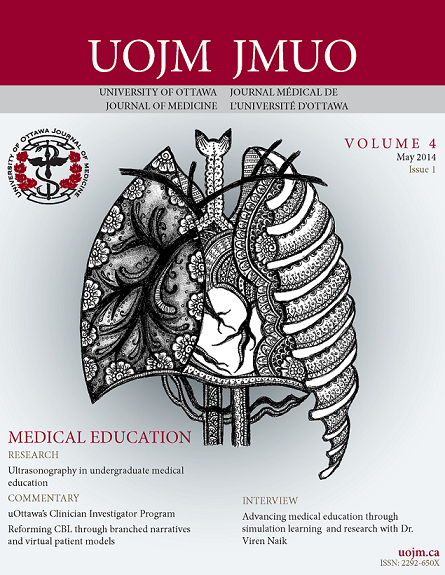Double blinding in peer review: is it worth the hype?
DOI :
https://doi.org/10.18192/uojm.v4i1.1030Mots-clés :
peer review, journalology, review bias, double-blind, single-blind, editorial, institutional medical journalsRésumé
INTRODUCTION Without a doubt, peer review is the measuring stick by which science is judged. Peer review is a longstanding tradition in academic circles as the standard practice for evaluating articles for publication, grants and academic promotions. The term itself conjures up certain connotations and mixed emotions. Knowing that a body of work has successfully gone through peer review immediately increases credibility and, although academics would be hesitant to confess, it is too frequently unquestioned. A recent article by John Bohannon in Science tells the story of how his bogus paper full of glaring fatal flaws was accepted by an astonishing 157 out of 255 open-access “peer reviewed” journals [1], casting doubt on the level of scrutiny from journals claiming to perform peer review. Perhaps it is time to cast aside our blind faith and understand the limitations of peer review.Téléchargements
Publié-e
2014-05-06
Numéro
Rubrique
Editorial
Licence
- Les auteurs qui publient dans le JMUO gardent les droits d’auteur de leurs articles, incluant tous les brouillons et la copie finale publiée dans le journal
- Bien que le JMUO n’a pas les droits d’auteur des articles soumis, en acceptant de publier dans le JMUO, les auteurs donnent le droit au journal d’être les premiers à publier et à distribuer leurs articles.
- Par la suite, les auteurs peuvent soumettre leurs documents à d’autres publications, incluant des revues ou des livres, avec un remerciement de leur première publication dans le JMUO
- Des copies du JMUO seront distribuées à la fois sous format papier et en ligne, et tous les matériaux seront accessibles au public en ligne. Le journal n’a pas de responsabilité légale par rapport à la distribution publique du contenu.
- Prière de vous assurer que tous les auteurs, les coauteurs et les investigateurs
- Le contenu est rendu disponible sous licence Creative Commons Attribution - Pas d'Utilisation Commerciale - Pas de Modification 4.0 International.


